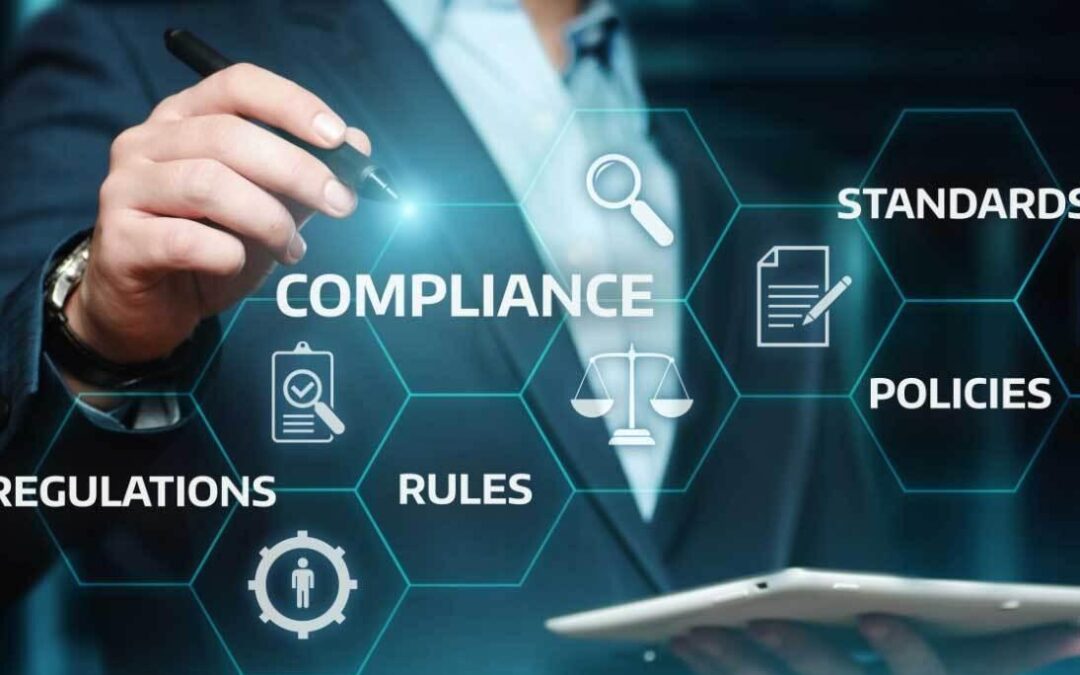In an ever-evolving world were innovation and compliance intersect, the landscape of regulations can often seem like a labyrinth, filled with twists, turns, and hidden pitfalls. “Navigating Regulations” invites you to embark on a journey through this intricate terrain, shedding light on the fundamental frameworks that govern industries and safeguard public interests. Whether you are a seasoned professional familiar with the regulatory ecosystem or a newcomer seeking clarity in a complex field, this article aims to provide insight into the principles of effective regulation navigation.We will explore the key elements that define regulatory landscapes, uncover best practices for staying compliant, and highlight the importance of adaptability in a world that is constantly changing. Join us as we demystify the regulatory process and empower you to chart a course through the intricacies of compliance with confidence and clarity.
Understanding the Regulatory Landscape and Its Implications
In an ever-evolving business habitat, understanding the complex web of regulations is crucial for organizations aiming to thrive. compliance isn’t merely a checklist; it’s a profound commitment that requires continuous vigilance and adaptation. Regulatory bodies impose guidelines that span a variety of sectors, impacting everything from consumer protection to data privacy. Organizations must be proactive in deciphering these guidelines and integrating them into their operational frameworks. This not only mitigates risk but also fosters consumer trust and corporate integrity.
To effectively navigate this landscape, businesses should consider several key strategies:
- Regular Training: Providing ongoing education for teams on regulatory updates is essential.
- Consultation with Experts: Engaging with legal and compliance professionals can clarify complex regulations.
- Utilization of Technology: Implementing compliance management tools can streamline adherence to regulations.
Moreover, establishing a culture of compliance within the association can enhance responsiveness to regulatory changes. This culture is best supported by obvious communication of guidelines and policies, ensuring that all employees understand their role in maintaining compliance. The consequences of non-compliance can be detrimental, not only financially but also reputationally.

Key Compliance Strategies for Businesses in a Changing Environment
In today’s rapidly evolving regulatory landscape, businesses must adopt proactive compliance strategies to navigate potential challenges. **Understanding regulatory changes** is crucial; organizations should conduct regular assessments of relevant laws and policies to ensure alignment. A dedicated compliance team can effectively monitor and interpret fluctuating regulations, facilitating swift adjustments to internal practices. moreover, leveraging technology can enhance compliance management by automating monitoring processes and generating real-time reports for stakeholders.
another indispensable strategy is fostering a culture of compliance throughout the organization. This can be achieved by **providing extensive training sessions** that educate employees about both internal policies and external regulations. Incorporating compliance into the company’s core values will encourage employees at all levels to prioritize ethical decision-making. Establishing an open channel for reporting concerns, such as an anonymous whistleblower system, can also deter non-compliance.To summarize, embracing versatility, integrating compliance into everyday operations, and fostering employee engagement are key components of an effective compliance strategy.

Leveraging Technology for Streamlined Regulatory Navigation
In today’s fast-paced regulatory landscape, organizations must harness the power of technology to navigate complex frameworks effectively. By integrating innovative solutions, companies can automate compliance processes, ensuring they stay ahead of changing regulations.**Key technologies** include:
- Compliance Management Software: Streamlines regulatory requirements and automates tracking.
- Artificial Intelligence: Analyzes data for risks and opportunities in compliance.
- Blockchain: provides transparent and tamper-proof records of compliance activities.
Additionally, leveraging cloud-based platforms allows for greater collaboration and data accessibility across departments. This not only enhances communication but also facilitates real-time updates on regulatory changes, helping teams remain agile and informed. A comparison table below outlines how conventional methods stack up against technological solutions:
| Method | Advantages | Disadvantages |
|---|---|---|
| Traditional Approach | Manual Tracking | Time-Consuming, Prone to Errors |
| Automated Solutions | Increased Efficiency | Initial Setup Cost |

Building a Culture of Compliance: Best Practices and Insights
Establishing a culture of compliance requires a proactive approach that integrates ethical practices into the core of an organization’s values. To cultivate this culture, consider implementing the following key strategies:
- Leadership Commitment: Senior management must demonstrate a strong commitment to compliance, making it clear that adherence to regulations is a fundamental principle of the organization.
- Regular Training: ongoing training sessions for employees at all levels ensure that everyone understands the compliance landscape and their role within it.
- Open Communication: Fostering an environment where employees feel comfortable reporting violations or concerns without fear of repercussions is vital.
- Continuous monitoring: Regular audits and assessments should be conducted to identify areas for improvement and to ensure compliance with evolving regulations.
As organizations navigate the complexities of regulatory frameworks, it’s essential to stay informed about the latest changes and trends. The table below highlights some of the best compliance practices organizations can adopt:
| practice | Description |
|---|---|
| Risk Assessment | Identifying potential compliance risks and taking proactive measures to mitigate them. |
| Policy Progress | Creating clear and comprehensive policies that outline compliance expectations. |
| Reporting Mechanisms | Establishing tools for anonymous reporting of compliance issues. |
| Incident Response | Having a defined process for responding to compliance breaches or misconduct. |
In Conclusion
As we conclude our exploration of navigating regulations, it becomes evident that the path through the labyrinth of rules and guidelines is not merely an obstacle to overcome but a landscape rich with opportunities for informed decision-making and innovation. Each regulation, rather than being a barrier, can serve as a guidepost, offering clarity and direction in the frequently enough complex terrain of compliance.
In an age where change is the only constant, understanding these frameworks equips us with the tools to adapt, innovate, and thrive. By embracing the intricacies of regulatory environments, we position ourselves not just as followers of rules, but as proactive participants in shaping a lasting future.
So, as you venture forth, remember that knowledge is your compass. Approach each challenge with curiosity and diligence, and let the regulations not only inform your actions but inspire your vision for what is absolutely possible. The journey of navigating regulations is ongoing,but with the right mindset and resources,it can lead to paths uncharted and opportunities unforeseen. Thank you for joining us as we navigated this essential topic, and may you continue to chart your course with confidence and insight.

